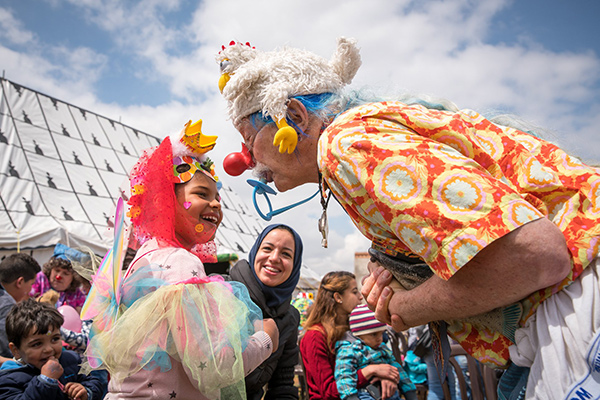By Patch Adams, MD
I entered medical school in 1967 to use medicine as a vehicle for social change.
I used my free time to study the history of health care delivery around the world and to look at contemporary models with the idea of creating a medical model that would address all the problems of the way care is delivered. I didn’t intend to create a model that would be THE answer to the problems; but to model creative problem solving, and to spark each medical facility to design their own ideal rather than succumb to the garbage of managed care, or a resignation to the impossibility of humanistic care.
The original vision has all the principles we have maintained all these years. There is no charge for the care. We want to eliminate the idea of debt in the medical interaction as a way to begin recreating human community.We don’t want people to think they owe something; we want them to think they belong to something. We cannot not conceive of a community which does not care for its people.
We do not accept third party reimbursement, both in order to refuse payment and to sever the stranglehold that insurance companies now have on how medicine was practiced.
We have nothing to do with malpractice insurance, which forces fear and mistrust into every medical interaction. We espouse the politics of vulnerability and are clearly aware that we can only offer caring and never promise curing. In such a flagrantly imperfect science, we need the right to make mistakes.
The loudest cry of patients is for compassion and attention, which is a call for time. So initial interviews with patients are three to four hours long, so that we can fall in love with each other. Intimacy is the greatest gift we can give patients, especially at a death bed, with intractable pain or chronic, unsolved medical problems.
A secret in the practice of medicine (so easily forgotten when business is the context) is how care is bidirectional—meaning, intimacy is as important for the care giver as it is the patient. In such a context, the wellbeing of the staff is as important as the well-being of the patients. The bidirectionality of healing is at the core of preventing burnout. The business of medicine has connected the word care with the concept “burden,” to describe all who need care, who are not wealthy. But we found the unencumbered practice of medicine is an ecstatic experience for patient and care-giver alike.
In spending this amount of time with patients, we found that the vast majority of our adult population do not have a day to day vitality for life (which we would define as good health). What the majority need is an engagement with life. This is why we fully integrate medicine with performing arts, arts and crafts, agriculture, nature, education, recreation and social service, as essential parts of health care delivery. This is a major reason that the staff’s home will be the hospital. We insist on friendships with our patients (made easy by not charging, and giving them our lives).
The ideal staff people we look for are, by intention, happy, funny, loving, cooperative, thoughtful and creative.I know the key to the creation of this beautiful model is in people deciding and choosing to live there; because it is people who really make a model. Ideas can only be as real as the people living them. Politically, our most potent wedge for change would be living happily together, in constant, joyful service, fully expressing our creative selves at extremely low salaries. The point is not to try to teach a staff this, but to find people for whom this was their way of life.
We plan to build a forty-bed rural community hospital –what we call Phase 6. There will be sixty beds for staff and beds for their families in a creative, comfortable communal hospital. There will be 30,000 square feet devoted to the arts in a fully arts-centered hospital. There will be a school for social change and in-depth agricultural programs. It will be funny looking, full of surprises and magic. In a context of service driven care, we aim to operate this hospital on 10% of the national average.
At the urging of friends in the US, given the collapse of health care systems in our country, we decided in 2009 to fundraise for phases 4 and 5, the teaching center, which will provide the indispensible minimum of our hospital vision.








